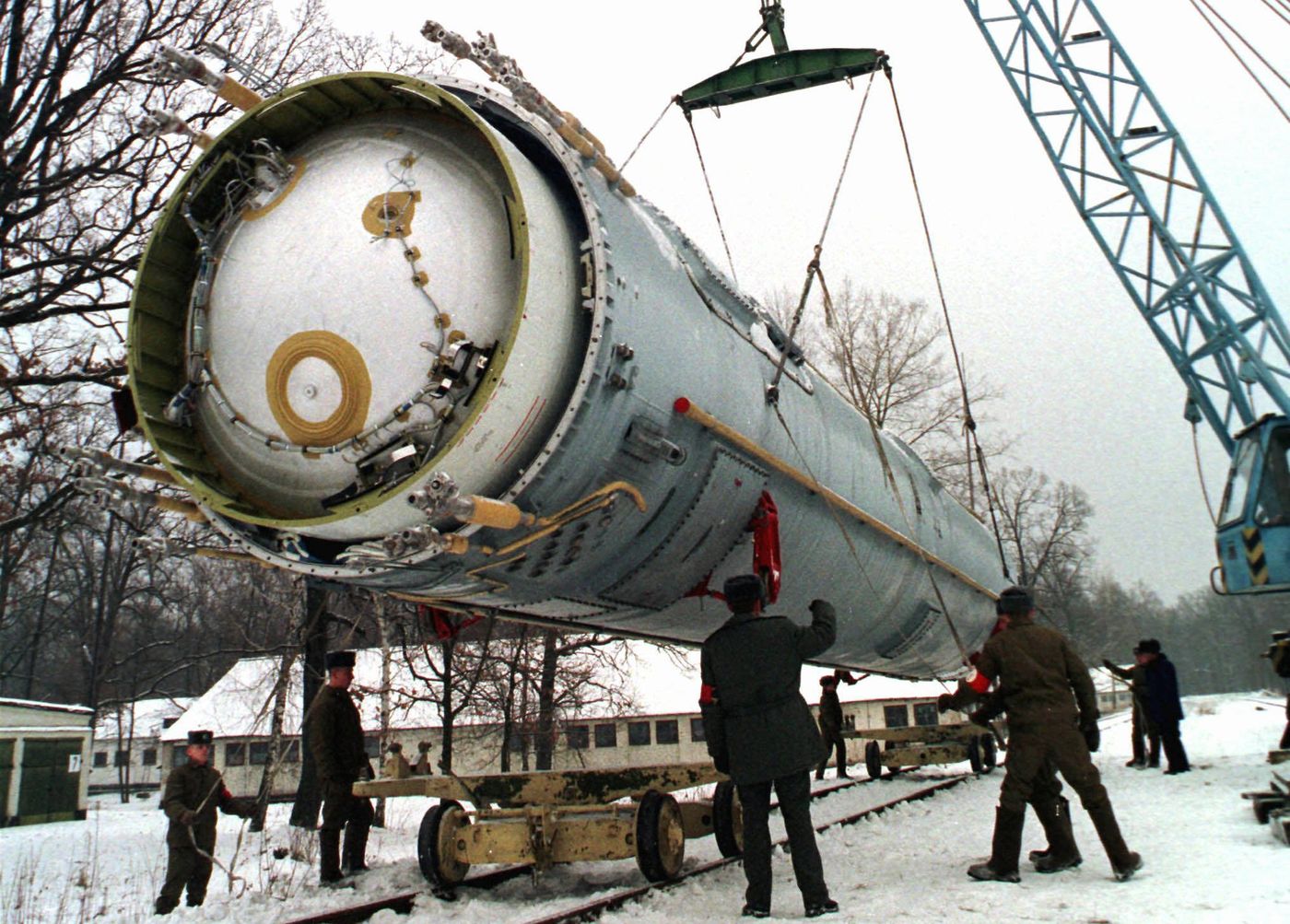Ukraine’s Nuclear Future
July 20, 2018 | Expert Insights

Ukrainian authorities claim that the first unit of a nuclear power plant was fully loaded with fuel from US based Westinghouse Electric Company as Kiev seeks to break its dependence on Russian energy supplies.
Background
On December 1, 1991, Ukraine, the second most powerful republic in the Soviet Union (USSR), voted overwhelmingly for independence. After the dissolution of the Soviet Union, Ukraine held around one-third of the Soviet nuclear arsenal, the third largest in the world at the time, as well as significant means of its design and production. An approximately 1,700 warheads and hundreds of ICBMs remained on Ukrainian territory. However, they did not have operational control, as they were dependent on Russian-controlled electronic ‘Permissive Action Links’ and the Russian command and control system.
The 1986 Chernobyl nuclear disaster released large quantities of radioactive contamination into the atmosphere, which spread over much of Western USSR and Europe. It is considered the worst nuclear power plant accident in history; and a key factor in the USSR’s dissolution, and a major influence in shaping the new Eastern Europe.
The leaders of Ukraine, Russia, Britain and the United States signed the Budapest Memorandum to provide Ukraine with security assurances in connection with its accession to the NPT as a non-nuclear weapon state in 1994. They countries were required to “refrain from economic coercion designed to subordinate to their own interest the exercise by Ukraine of the rights inherent in its sovereignty and thus to secure advantages of any kind.”
Despite Russia's annexation of Crimea in 2014, Ukraine reaffirmed its 1994 decision to accede to the Nuclear Non-Proliferation Treaty as a non-nuclear-weapon state. As of 2016, Ukraine operates four nuclear power plants with 15 reactors located in South Ukraine. Nuclear energy powers nearly half of Ukraine’s electricity.
Analysis
Ukraine’s nuclear energy monopoly, Energoatom, said that a unit of the South Ukraine Nuclear Power Plant near the town of Yuzhnoukrainsk had become “the first power generation unit operating solely using Westinghouse fuel.”
“Westinghouse began supplying fuel to Ukraine in 2005, when the first lead test assemblies were delivered to South-Ukraine Unit 3,” said Aziz Dag, vice president and managing director, Northern Europe. “We are proud to continue supporting Ukraine with their energy diversification by supplying a full core of Westinghouse VVER-1000 fuel to our customer, Energoatom.”
Currently Westinghouse supplies fuel to 6 of Ukraine’s 15 nuclear power reactors. From 2021, the number of reactors with Westinghouse fuel will increase to seven. The nuclear fuel delivered by Westinghouse is manufactured in its fuel fabrication facility in Västerås, Sweden.
According to experts, nuclear power industry is pivotal to Ukrainian economy and industry development. In a study conducted by ReMark research company and Information and Analytical Center for Nuclear Energy (EUAXIS) with nuclear experts, 93% of respondents consider the further development of the country’s nuclear industry necessary. Only 7% of respondents believe that there is no need to develop nuclear power industry: nuclear power units operated should run till their design lifetime after which they should be taken out of service.
Ukraine’s role as a buffer state between Europe and Russia has been contentious since the former Soviet satellite state’s eastern provinces became the hotbed for Russian backed rebel insurgency. For the Kremlin, Ukraine’s increasing alliance with EU and NATO has sparked outrage. Yet, Ukraine’s shift from Russian inputs to US ones will secure a trusted source for long term energy production. Dependence on nuclear energy, which accounts for about 50% of its electricity generation, had increased Ukraine’s strategic vulnerability to Russia.
Despite persistent safety problems, the Ukrainian government has approved lifetime extensions for four of its 15 nuclear units since 2010. Romania, Slovakia, Hungary and Austria have sent multiple questions for clarification and requests for participation in trans-boundary consultations, but Kiev denied its obligation to conduct the same. Moreover, the European Investment Bank (EIB) cannot support a nuclear future in Ukraine while pursuing EU objectives to diversify the energy supply of Member States. The EU ought to acknowledge its responsibility and suspend its support until Kiev starts taking into account the safety of Ukrainians and Europeans beyond its borders.
Ukraine is struggling with an ailing economy and increasing political turmoil. A western source of fuel will not reduce Ukraine’s strategic vulnerability. Instead, a shift to alternative sources which run on sustainable energy models will not only improve Ukraine’s political climate, but also safeguard the ecology of the land which continues to suffer from the catastrophic disaster in Chernobyl.
Assessment
Our assessment is that the full capacity of a nuclear plant run on US fuel demonstrates Ukraine’s independence from Russia. We believe that in the long run, it is more effective for Ukraine to suspend lifetime extensions of nuclear plants and formulate an energy framework which maintains sustainability as a prime objective.








Comments